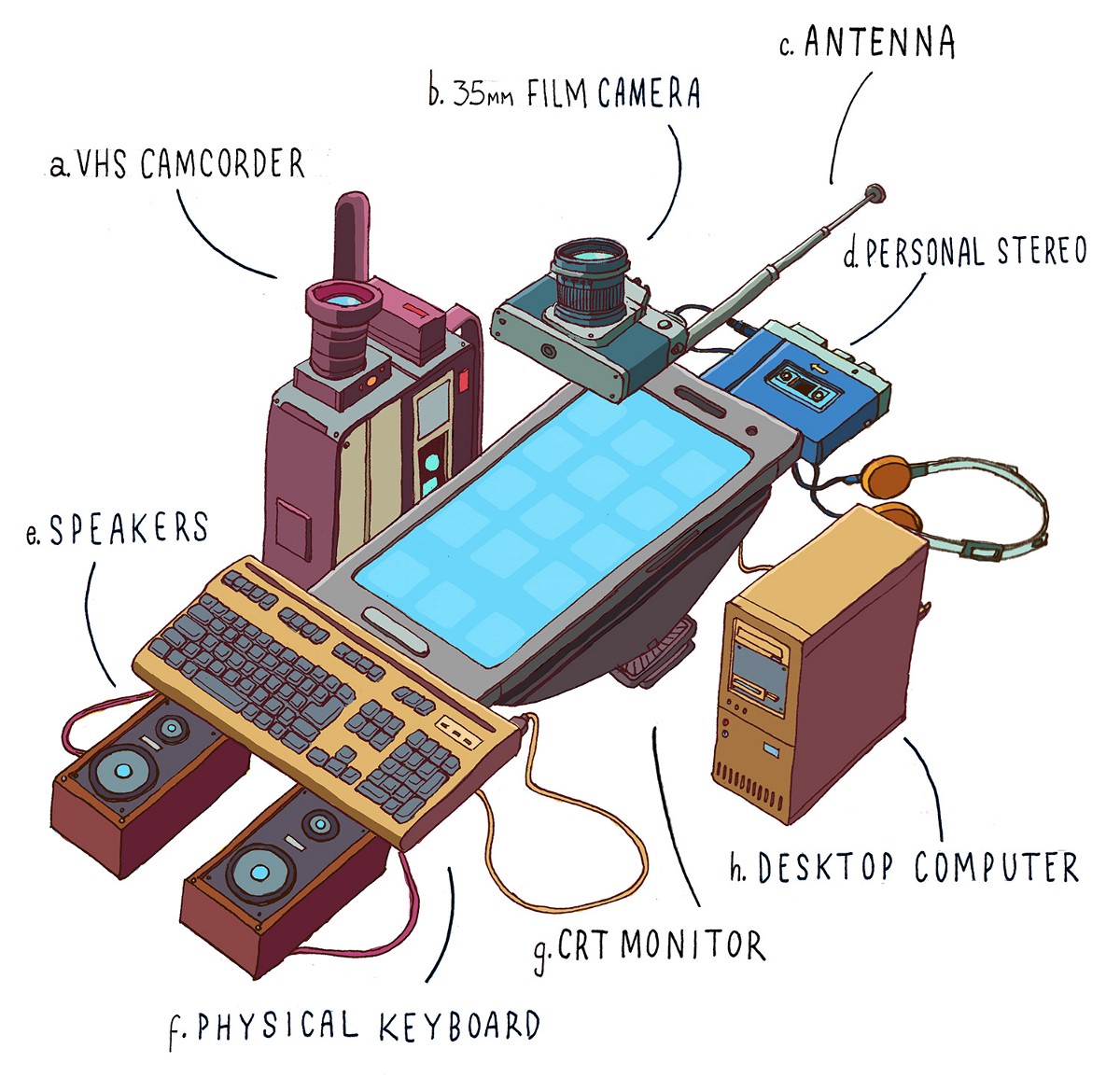The world’s mobile tech companies are launch new phones every year–ever-lighter, ever-thinner, and ever-more sophisticated. (Just a shame they never seem to have ever-longer-lasting batteries).
We wanted to unpack the bundle of inventions behind that shiny black mirror in your pocket.


a. The first consumer video camera was made in 1983 and was shoulder mounted weighing 2.5kg. Current smartphones can record at over twice the screen resolution and fit in your hand weighing 110″”130 grams.
b. 35mm negatives could “‘hold’ up to 36 images which would need to be processed and developed. With the advent of digital we now take more photographs than ever with over 6 billion photographs uploaded per month to Facebook alone.
c. Early transmitters were able to carry a signal up to 1.5 kms. Your mobile antenna now enables you to connect with any number in the world using a global network of satellites.
d. The first commercial personal stereo was released in 1979, and could play 90 minutes of music off one tape. The first iPod released in 2007 could store over 60 hours of audio.
e. In 1924 the first commercially available loudspeaker was over 20cm and sold for the equivalent of $3000. The speakers in a smartphone are less than 1 cm deep.
f. In the late 1800s mechanical keyboards were used to transmit text across telegraph lines to ticker tape. Keyboards are now part of the touchscreen and can send text through instant.
g. Cathode Ray Tube monitors & televisions were big and extremely heavy. Early screens had a resolution of 640 x 480 pixels, while today’s phones can be as high as 1600 x 2560 pixels.
h. The UNIVAC I computer was available for over $1 million in 1951 at a speed of 0.0002 MIPS (millions of instructions per second). Smartphones can be bought for under $100 and can perform up to 20,000 MIPS.


How We Get To Next was a magazine that explored the future of science, technology, and culture from 2014 to 2019. This article is part of our Histories of”¦ section, which looks at stories of innovation from the past. Click the logo to read more.
